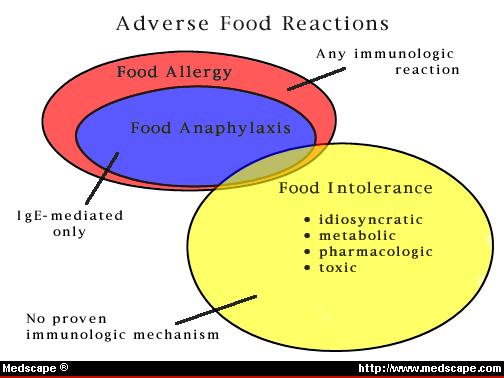Food allergies- when food is the enemy. Allergic reactions range from the mild rash to the very scary anaphylaxis. We have known for some time that little Ellie Rose is allergic to walnuts but thought it was prudent to pursue testing to rule out any other allergies.

What happens in the body to make your child puff up like a puffer fish?
The spectrum of allergic responses to food trigger is modulated by the immune system. It is important to note that not all allergens result in “Food anaphylaxis” or are IgE-mediated. The difference in how the immune system responds results in the array of visual symptoms. The role of specific cells and mediators remains a hot topic for debate. Most people believe that more mild food allergy and intolerance symptoms are the result of increases in histamine without a change in basophils, however some have found that eosinophils increase. Basophils and eosinophils are both granulocytes, and white blood cells active in immune responses. The basophils are called to the front lines to interact with foreign bodies and are involved in inflammation by releasing histamine and heparin; histamine dilates blood vessels leading to warmth and swelling while the heparin prevents blood clotting. Eosinophils are phagocytes and consume, or “Eat” foreign bodies and can help to calm inflammation.
IgE, or immunoglobulin E, is an antibody that leads to a systemic inflammatory cascade which utilizes mast cells. Mast cells are another white blood cell rich in histamine and heparin. The IgE response causes reactions in the nose, lungs, throat or on the skin. Epinephrine is the antidote for anaphylaxis; at recommended doses epi can constrict the blood vessels and alleviate symptoms of swelling and itching via α-adrenergic pathways and can restore airways by β-adrenergic properties. In low concentrations, epinephrine can also block the antigen, or allergenic protein.
At Ellie’s first encounter with walnuts, she simply didn’t like them and told me they hurt her mouth. I, originally, thought it was a new texture that she needed to get used to. At second try a few weeks later, her face quickly swelled causing her eyes to swell shut and her breathing became labored. I quickly rushed to get Benadryl (anti-histamine) which calmed her body down and she recovered in a little less than an hour. Since that day, we have carried out a strong educational campaign among the quints and her caretakers to strongly reduce the risk of another exposure. The campaign has worked but knowing that she will be starting school in a few short months, we thought an epi pen may be a great tool in our tool box. This warranted a visit to Allergy Clinic.
Big Eight
Food allergens are water-soluble glycoproteins that are typically stable to heat and acid. The most common food allergens are called the big eight and include:
- Cow’s milk
- Chicken Eggs
- Peanuts and Legumes (almond, pecan, coconut, cashew)
- Tree Nuts (Brazil nut, chestnut, hazelnut, pine nut, walnut)
- Cereals (Wheat)
- Soy
- Fish
- Shellfish
In clinic, the team tested Elliott using the skin-prick test. Since Elliott consumes peanuts, almonds and coconut safely, they chose to only test those nuts, legumes and tree nuts that are unknown and most similar to walnuts: Black walnuts, English walnuts, Hazelnuts, Pine Nuts and Pecans.
The skin prick test is completed by scratching the surface of the back while applying a diluted allergen solution. Then, a labeled grid is drawn around the test area. The control is always included to demonstrate a sample “wheal,” or raised, red and itchy bump. After 15-20 minutes, the team can see which allergens cause a response. It is important to note that the size of the wheal does not necessarily correlate with the allergic response. So, as one can see in Ellie’s photo the A column demonstrates her response to the control solution and the two types of walnuts, as well as, pecans in column B. Despite, pecans larger than walnuts it may not produce anaphylactic reactions. Of course, we have added pecans to Ellie’s list and have restarted our walnut and pecan allergy campaign. We also left the office with school plans and a prescription for epinephrine.
Now, while Elliott won’t be eating any walnuts or pecans in the near future, the doctor said it is unlike wheat allergies/gluten allergies and we can keep them in the house. They shared that despite popular knowledge, nuts do not commonly produce allergic responses via airborne contact. Therefore, Theo can still enjoy his walnuts at snack time despite sitting right across from Ellie.
To lighten up this post, I’ve also provided some fun Snapchat photos which were taken while waiting for the Doc.





